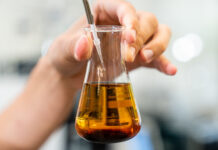New health trends lead to reformulation of products in order to partially or totally reduce sugar without giving up sweet taste and overall product appeal.
In the last 30 years market trends have been moving more and more towards food and beverages with reduced simple sugar content. This reduction is significant not only in order to meet the needs of consumers who are watching their weight and looking for light products, but also in consideration of the fact that an elevated intake of sugars is linked to metabolic pathologies like diabetes and tooth decay (the World Health Organization recently recommended that the quantity of added sugar be halved in order to protect against tooth decay). In the case of the confectionary, bakery and soft drink industries, all three known for the addition of sugar to produce a sweet taste in their products, this trend means reformulating the products so that the sugar content be partially or completely eliminated without giving up the sweetness and overall pleasant appeal of the product. Sweeteners are a wide group of substances which have the capability of stimulating the sweet taste receptors without however adding the typical calories of sucrose (about 4 Kcal per gram). Sweeteners can be subdivided first of all into the two categories of “natural” or” artificial”. While the definition of artificial sweeteners is rather simple, since it deals with substances obtained through synthetic means, it is not however easy to understand what it meant by natural sweeteners. In fact sweetening for example a jam with concentrated apple sugar or with a molecule extracted from natural sources (i.e. thaumatin) are perceived quite differently by the consumer as being healthy and natural. Another important characteristic to consider is when to choose a sweetener for the product and its compatibility with the product itself. For instance the sweetener Stevia® is rapidly taking over the market both as a sugar substitute for domestic use as well as a light industrial product, but the major producers of soft drinks consider its organoleptic profile less than ideal for use as a sweetener in their sugar-free and light product lines. As far as bakery products go, there are other additional considerations such as surface browning from the Maillard reaction and the release of the related aromatic components during baking. Completely substituting sucrose with sweeteners in bakery products could have a severe negative effect from this point of view, but there are some solutions which will be explored in this article. The major sweeteners available on the market today are the following:
Aspartame. Discovered at the end of the 60s, it is the methyl ester of the dipeptide compound of aspartic acid and phenylalanine. Its safety has been the subject of discussion over the past 20 years by different scientific groups and food safety authorities. From the results of a recent study (1) it appears that there exists no current proof that it can harm health. Therefore this is a confirmation of what the EFSA (European Food Safety Authority) has repeatedly stated, that aspartame can be safely consumed according to the ADI (Acceptable Daily Intake) of 40 mg per kilogram of body weight. The EFSA has reconfirmed this amount also in its recent re-evaluation of the substance (2). This limit is not valid however for patients affected by phenylketonuria, a metabolic pathology that requires a diet low in phenylalanine, which is a breakdown product of aspartame. For this reason, all food products containing aspartame must carry a safety warning.
Acesulfame-k. A synthetic sweetener like aspartame, which has in common a similar sweetening intensity (almost 200 times more than sucrose) and comparable uses, often in association with aspartame itself.
Sucralose. This is a chlorate derivative of sugar without caloric content since it is not metabolized by the body. Discovered by chance, it has a sweetening power 3 times greater than aspartame and the notable advantage of being very stable, even at high temperatures, which makes it ideal for the production of baked goods with reduced sugar content.
Other synthetic sweeteners
Saccharine (discovered at the end of 1800, with its bitter and metallic aftertaste) and cyclamate are among the synthetic sweeteners which are found today in wide use.
Thaumatin. Extracted from an African fruit, it has a very high sweetening power (almost 3000 times greater than sucrose) but limited uses.
Polyols. Polyols, including isomalt, xylitol, maltitol, mannitol and erythritol, are hydrogenated carbohydrates that have been utilized as sweeteners for decades particularly in the confectionary industry. Even though they have almost the same caloric content of simple sugars, they have great advantages like low glycemic index and do not contribute to tooth decay since they are not broken down by the bacteria in the mouth. Xylitol can even boast the health claim of being approved by the EFSA for the prevention of dental plaque build-up by chewing gum containing xylitol three times a day after meals, a factor which has increased its notoriety. It has a low glycemic index so it can be safely consumed by a part of the diabetic population and has almost half the calories of sucrose. Xylitol can be extracted from vegetable and wood fibre including some scrap products (for example corn cobs). The majority of xylitol available worldwide is produced in China from corn cobs (which also poses a GMO risk) while in North America it is generally extracted from hardwoods. In the past few years, the use of polyols has been extended to other industries, in particular baked goods. These sweeteners can in fact replace sugar rather well in the preparation of sweet products like muffins, without posing a negative impact on the properties of the batter and the qualities of the final product (3). Some polyols (i.e. sorbitol, maltitol, mannitol, and xylitol (although to a lesser extent) have a laxative effect if consumed in high quantities, a side effect that must be indicated on the label.





